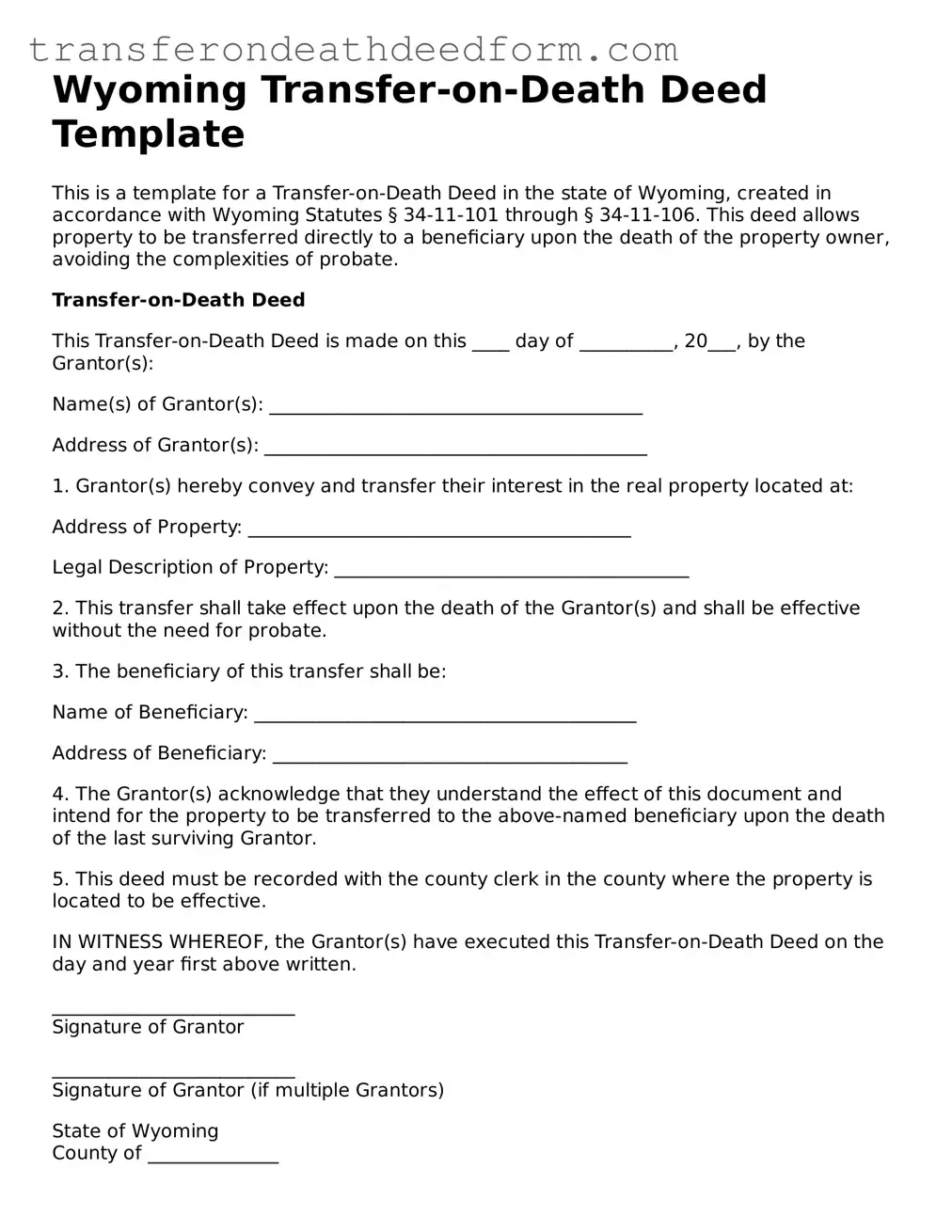Wyoming Transfer-on-Death Deed Template
This is a template for a Transfer-on-Death Deed in the state of Wyoming, created in accordance with Wyoming Statutes § 34-11-101 through § 34-11-106. This deed allows property to be transferred directly to a beneficiary upon the death of the property owner, avoiding the complexities of probate.
Transfer-on-Death Deed
This Transfer-on-Death Deed is made on this ____ day of __________, 20___, by the Grantor(s):
Name(s) of Grantor(s): ________________________________________
Address of Grantor(s): _________________________________________
1. Grantor(s) hereby convey and transfer their interest in the real property located at:
Address of Property: _________________________________________
Legal Description of Property: ______________________________________
2. This transfer shall take effect upon the death of the Grantor(s) and shall be effective without the need for probate.
3. The beneficiary of this transfer shall be:
Name of Beneficiary: _________________________________________
Address of Beneficiary: ______________________________________
4. The Grantor(s) acknowledge that they understand the effect of this document and intend for the property to be transferred to the above-named beneficiary upon the death of the last surviving Grantor.
5. This deed must be recorded with the county clerk in the county where the property is located to be effective.
IN WITNESS WHEREOF, the Grantor(s) have executed this Transfer-on-Death Deed on the day and year first above written.
__________________________
Signature of Grantor
__________________________
Signature of Grantor (if multiple Grantors)
State of Wyoming
County of ______________
Subscribed and sworn to before me this ____ day of __________, 20___.
_____________________________
Notary Public
My Commission Expires: ______________
